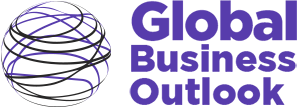What seems to be as significant as the turn of a century in the sweep of time, the pandemic has changed how people work forever. The gains of remote work both by corporations and individual workers have made hybrid the new normal. The success of how companies transition from more legacy setups and improve on their efficiencies will be dictated by the choice and approaches to technology for the purpose of employee engagement.
If the great resignation has served any lessons, business leaders need to reach out to their colleagues with empathy and build a sense of camaraderie. In-office perks have to be re-imagined to win the hearts of the employees of this age. Multiple surveys show that currently, employees feel underserved by the current technology at their disposal and that includes even their internet connections in some cases.
A study by Qualtrics covering 14,000 employees across the globe found that only 30% of the workers felt that the technology at their disposal was more than what they expected. The study found that employee retention goes up when they feel that they are equipped with the right technology. Once this criterion is met, 85% of employees are likely to stay more than a period of three years in the firm.
Apart from this, investing in the right technologies can translate to an inclusive and welcoming environment where talent is harvested and retained. In order to be an attractive company to work at, the management has to decide on how the present technological experience has an impact on the overall productivity and collaboration potential.
This can mean tweaking and optimizing the nature of virtual meetings and the frequency of such exercises. The first step to address any lacunae if it exists is to first ask the employees for their candid opinions rather than assuming. Further business leaders should sit with the human resource department to figure out employees routinely and do a pulse check on the same from time to time. This should be complemented with an exercise of them expressing their satisfaction levels with the technology in use and what can be better.
A summary of these responses can lead to a decision point if or not to invest in new technology or tools to improve productivity. A big takeaway from the Work Trend Index conducted recently by tech giant Microsoft is that each and every member of the workforce often has key insights to share. So all inputs need to be collected and taken into account before making any compartmentalized decisions.


